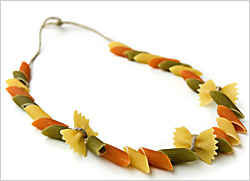 With four separate
consumer forecasts predicting spending increases for Mother’s Day, there’s little doubt that most moms will get something on May 12. But what do American mothers say they really crave?
Bring on the crayon cards, pasta jewelry and husband-propelled vacuum cleaners.
With four separate
consumer forecasts predicting spending increases for Mother’s Day, there’s little doubt that most moms will get something on May 12. But what do American mothers say they really crave?
Bring on the crayon cards, pasta jewelry and husband-propelled vacuum cleaners.
Market researcher NPD, in a study for Child’s Play Communications, found that of the more
than 2,000 moms of kids 18 and younger it sampled, a handmade gift from their child was on the top of the list, chosen by 14.6%. No. 2, however, was a day off entirely for herself (13.6%), closely
followed by a spa day (12.9%). And apparently, they have become bored with sticky sheets: Only 1.3% say they want breakfast in bed.
advertisement
advertisement
The predictions about what these moms will
actually get, however, vary considerably. The National Retail Federation just released its annual survey, conducted by BIGinsight, and predicts that consumers will spend an average of $168.94 on mom
-- up 11% from last year’s $152.52, with total spending expected to top reach $20.7 billion.
Among its findings: More than 14% -- the highest percentage in the history of its
survey -- intend to buy something electronic for Mom, with iPads leading the list. One third say they will buy jewelry, it reports, with more consumers looking to buy group gifts to ease budgetary
constraints.
A meal out, flowers and gift cards are also high on the list. And 29% will buy these gifts online, also a record.
Meanwhile, both IBISWorld, which is
predicting that Mother’s Day spending will rise 6.5%, and Brand Keys, anticipating a 5% gain in spending, believe consumers will frown on those electronics, as consumers look for more
traditional ways to make mom feel loved.
IBIS also sees a 5.1% drop in greeting cards, as consumers become increasingly enamored of e-cards and social-network
greetings.)
And while the Brand Keys study reports that 92% of consumers intend to observe the day, the reality may be a little different: 23.6% of the moms in the NPD survey
say they got bupkis last year. And 21.3% say that they expect their families will not spend any money on gifts, with "zero" being the price range category with the highest percentage response in the
NPD study, followed by $10 (16.7%) then $20 (15.3%).
"Pasta Necklace photo from
Shutterstock"